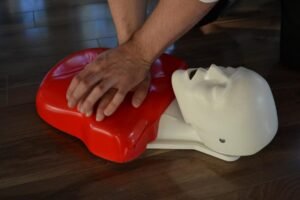On a daily basis, there is always the potential for illness, injury, or sudden health emergencies to occur in places where we work, live, learn and play. Even though most cases would only require an application of a Band-Aid, others can be life-threatening. With this in mind, it is important that you know how to deliver first aid in case someone is injured or becomes sick.
What is first aid?
First aid is the term that describes the immediate treatment of an individual after an injury or illness before emergency assistance arrives. Even though it is true that immediate medical care has been practiced in the past, first aid drastically evolved back in the mid-19th century when the soldiers were trained to help out fellow troops who were injured in the field before medical help could be delivered.
Who should learn first aid?
Always bear in mind that first aid instruction is typically required for individuals in certain professions such as teachers, nurses and law enforcement officers. Nevertheless, anyone can learn the essential first aid skills. By knowing what to do when an accident occurs or when someone becomes ill, it can help prevent the worsening of the condition and promote better recovery. The most important aspect is that it can help save a life.
Before you will enroll in a first aid course, it is important to determine personal qualities that you possess that are useful when responding to any medical emergency. You should be capable of staying calm in any situation and able to calm the victim. You must possess good observational skills in order to assess what to do to ensure your safety during an emergency scenario and to quickly yet carefully assess the situation. It is also best if you are a methodical individual, so that you can prioritize the steps to take and then follow through until the medical team arrives.

General first aid steps
1. Check the scenario for possible dangers to yourself and others. Do not proceed if your safety is at risk. Immediately call for emergency assistance.
2. In case the situation is safe, check the medical condition of the individual. Avoid moving the individual unless needed to protect from further danger.
3. Call for medical help if needed. You can request someone to call for emergency assistance or make the call in case you are alone.
4. You have to deal with life-threatening issues. In case the individual is choking, perform the Heimlich maneuver. For bleeding, control it by applying direct pressure. If the individual is not breathing or without a pulse, start CPR and continue until the medical team arrives.
5. Stay with the individual until the medical team arrives.
By enrolling in a first aid course, it can truly make a difference in any emergency situation as well as helping save a life.
